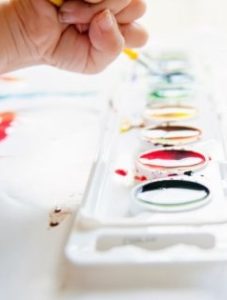Photos for Curriculum Planning
Photos can later be reviewed later during nap time or a team meeting and used as a curriculum planning tool. When looking back at photos, you might catch details you didn’t notice before. This can support curriculum planning to think about what questions the children are asking, to find out what they are interested in, and think about ways to dive deeper into the learning. Later, these photos can be used for documentation to act as a classroom display, showcasing the children’s learning.
How to Share Photos
If you do not currently share photos with parents, there are many different options to consider. Some teachers use apps such as Brightwheel, Sandbox, or MunchKin Report while other teachers keep it simple with weekly albums through private Facebook groups or Google Photos. An important note is that these apps, while offering much more robust variety of features, typically have costs and subscription fees. Google Photos and other social media options are free.
All of these options are great ways to share photos, but the most important thing is to find the way of photo sharing that works for you and your team. Once you find a system that works, stick to the plan to ensure that parents receive consistent, dependable communication.








